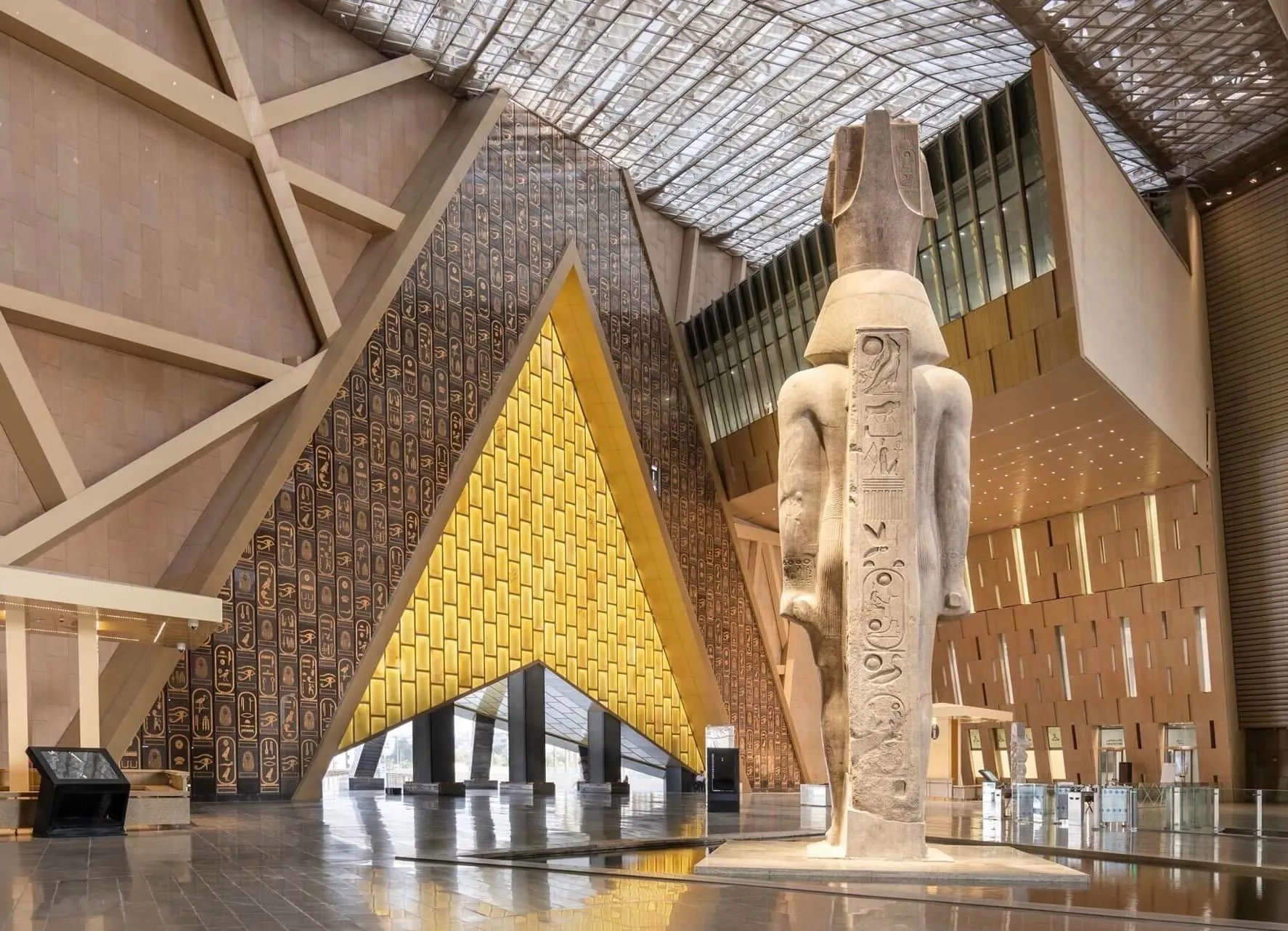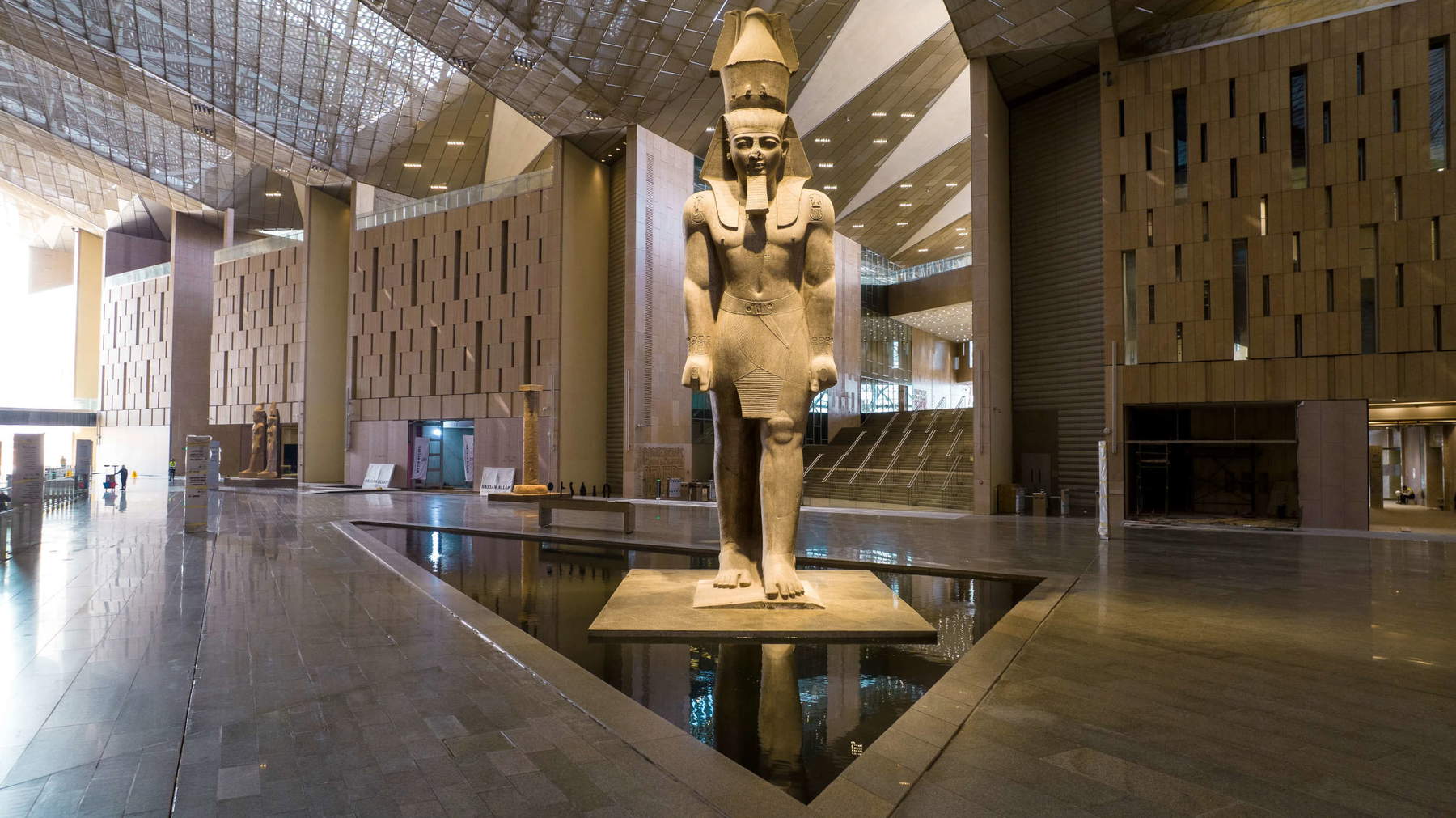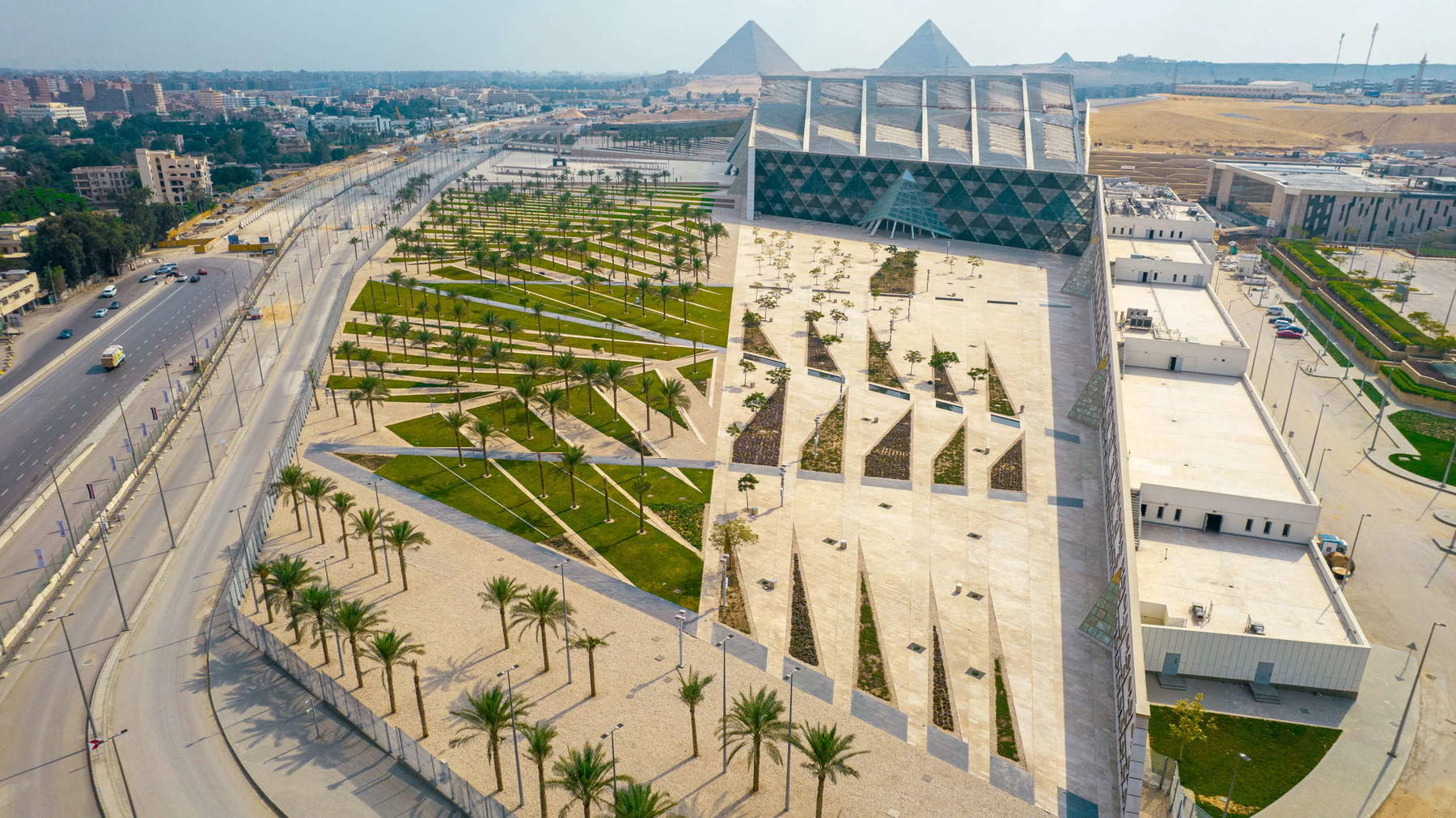The Great Egyptian Museum partially opened: first 12 rooms opened
Imposing, innovative, impressive. The Grand Egyptian Museum (GEM) in Cairo finally began to partially open its doors on October 16, 2024 introducing 12 rooms that present a comprehensive eye on Egyptian civilization. Located near the pyramids of Giza, the 120-acre museum is an ambitious project that, with an investment of more than $1 billion (we are talking about 920 million euros), promises to be the largest archaeological museum in the world, with more than 100.000 artifacts including the entire treasure of Tutankhamun (c. 1341 B.C.E. - c. 1323 B.C.E.) that will be displayed in its entirety for the first time. Its official opening has not yet been announced but access tests are planned for about 4,000 visitors. After more than two decades of planning and development, the GEM aims to be a symbol of the link between Egypt’s past, present and future. Indeed, the collection spans from the origins of Egyptian civilization to the Greco-Roman periods.
Eissa Zidan, director general of conservation, restoration and transportation of antiquities at the Grand Egyptian Museum, announced that more than 200 artifacts belonging to Tutankhamun’s collection, currently stored at Cairo’s Tahrir Egyptian Museum , which opened back in 1902, will be transferred to the GEM before its official opening. Zidan also pointed out that to date the Tahrir Museum houses more than 220 pieces from the pharaoh’s collection, including such rather well-known objects as the funerary mask, golden coffin and throne. Therefore, the pharaoh’s artifacts will be set up in the GEM’s new exhibition halls to ensure optimal preparation and care for the inauguration. In addition, he revealed that the pharaoh’s treasures will be displayed in a dedicated room seven times larger than that available at the Tahrir Museum. All this will allow visitors to analyze the collection more closely, supported by the use of the latest display technologies, similar to those of internationally renowned museums. One of the rooms, for example, will use virtual reality to tell the story of Tutankhamun’s burial and its development in ancient Egypt. The use of cutting-edge technology will thus allow visitors to explore stories related to the burial and culture of ancient Egypt. “The museum is a gift to the whole world,” said Eissa Zidan.



But how is the museum structured? GEM’s 12 main rooms will be divided by dynasties and historical periods. Prominent among the eras represented are the Third Intermediate Period (1070-664 BCE), a transitional phase marked by political and cultural changes, and the Late Period (664-332 BCE). In addition to this, the eras of the Greco-Roman Period (332 B.C.-395 A.D.), during which Egypt became a crossroads of Hellenistic and imperial influences, and the New Kingdom (1550-1070 B.C.E.), during which pharaohs such as Ramses II (1303 B.C.-1213/1212 B.C.E.) and Tutankhamun reigned. Other key sections will be devoted to the Middle Kingdom (2030-1650 BC) and theOld Kingdom (2649-2130 BC), considered the golden age of pyramid building and pharaonic civilization. Each room features at least 15,000 artifacts, including statues and objects from the daily life of ancient Egyptian society. A grand staircase, six stories high, gives visitors a view of the pyramids and houses spaces for exhibitions, monuments and historical artifacts. In addition to culture, the museum also integrates entertainment, with dedicated galleries for children, augmented reality experiences, and a wide range of restaurants and stores. A Conference Center and Auditorium will further enrich the offerings. In this way, the GEM will become a focal point for visitors of all ages.
The history of the Great Egyptian Museum began in 2002, when the Egyptian government launched an ambitious international competition to create a new museum complex to house some of the most precious treasures of antiquity. The project, which represented a unique opportunity to reaffirm modern Egypt’s role in the international cultural landscape, found its momentum as early as the following month, when the foundation stone was (symbolically) laid at the chosen site, located just two kilometers from the Pyramids of Giza, the only one of the seven wonders of the ancient world to have survived to the present day. In 2003, at a press conference in Cairo, the name of the winner of the prestigious architectural design competition was unveiled: the Irish firm Heneghan Peng Architects, which had distinguished itself with a cutting-edge architectural vision, was commissioned to transform its innovative concept into the future GEM. The start of work in 2005 was actually marked by a series of environmental, financial and political difficulties, which significantly slowed the project’s progress. The obstacles culminated in 2011, when the Arab Spring engulfed Egypt, forcing a halt to work as the country grappled with a period of deep political instability. To further complicate the situation, the tourism sector, critical to the Egyptian economy, suffered a drastic decline. This worsened the financial picture and jeopardized the implementation of the museum. With the restoration of greater political stability in 2014, the project experienced a new phase of revitalization. Work resumed, fueled by international loans that made it possible to overcome the financial crisis and bring ever closer the dream of a museum destined to become a symbol of Egypt’s cultural renaissance.
 |
| The Great Egyptian Museum partially opened: first 12 rooms opened |
Warning: the translation into English of the original Italian article was created using automatic tools. We undertake to review all articles, but we do not guarantee the total absence of inaccuracies in the translation due to the program. You can find the original by clicking on the ITA button. If you find any mistake,please contact us.




























